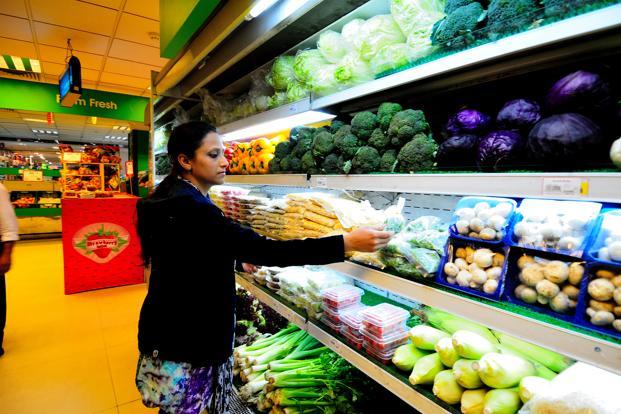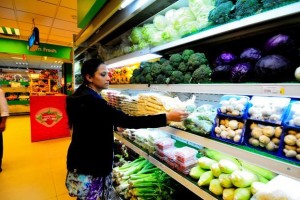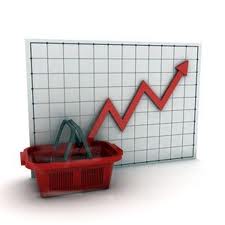Inflation is defined as the a general and sustained rise in prices. Having covered the high inflation episodes in India in another article, I will proceed to food inflation in India. Inflation depends on 2 factors demand for and supply of the goods and services in the economy. Deficient supply and excessive demand (or both at the same time) cause a rise in the level of prices. Supply side bottlenecks in India mainly originate from the food sector, where agricultural productivity largely depends on the vagaries of the monsoon. Food, which forms a major part of the consumer expenditure of majority of Indians does not get reflected commensurately in contribution of agriculture to the national product. According to National Sample Survey Organization’s 66th round of Consumer Expenditure survey (2009-2010), 40.7% of the urban household expenditure is spent on food and the proportion is 53.6% in rural areas.As can be seen in the table below, the agricultural sector has had a share of 14.6% and 14.4% in GDP in 2009-10 and 2010-11 respectively. This share reduced to 13.9% in 2013-14. There is evidently a mismatch between the share of food in the household expenditure and the share of food in the GDP.
|
Growth Rates and Sectoral Composition of Real Gross Domestic Product |
||||||||||||||||||||||||||||||||||||||||||||||||||||||||||||||||||||||||||||||||||||||||||||||||||||||
|
||||||||||||||||||||||||||||||||||||||||||||||||||||||||||||||||||||||||||||||||||||||||||||||||||||||
Source: RBI Annual Report 2010-11
Low agricultural productivity in India is structural in character, owing to use of backward technology, defective land tenure system, lack of adequate storage and irrigation facilities, weak supply chains, and deficient infrastructure in transport and power. With a population which has crossed the 1.22 billion mark according to the 2011 census, feeding it has posed a major challenge. As per the Economic Survey 2009–10, per capita net availability per day of cereals and pulses has been lower than that observed in the previous four decades. The per capita daily availability of foodgrains was 447 grams in the 1960s and 1970s, which successively increased to 459 grams in the 1980s and 478 grams in the 1990s but came down to 446 grams during 2000–08 and stood still lower at 436 grams in 2008. The situation is far more worrisome for pulses: its per capita net availability per day has gone down from around 60–70 grams during the 1950s to around 30 grams currently.
Food inflation, being subject to supply shocks*, tends to be volatile. For example, the performance of monsoon has a significant bearing on prices of foodgrains. Spikes in food prices normally subside as they are transitory. But with rising income and affluence, people shift from cereals to higher value products such as vegetables, dairy products and other protein items like meat, fish, eggs, pulses and edible oils. Thus inflation in these items has not been fuelled by temporary supply side issues but by a firm and rising demand-side pressure. Inflation in protein items has been inching upwards with time, forming a long term trend.
India’s edible oil requirement is 16-17 million tones, about 50% of which is met through imports. Thus international edible oil prices affect the domestic edible oil market significantly. This is evident from the surge in international edible oil prices leading to a rise in the domestic inflation rate from 0.09% in April 2010 to 11.82% in Nov 2011.
*Please refer to this article to know more about price shocks: http://vskills.in/certification/blog/causes-of-inflation-part-ii-cost-push-inflation/
Click here for government certification in Accounting, Banking & Finance





9 Comments. Leave new
Very well explained!
Good effort..!
Well explained especially the use of timeline is very satisfactory.
Excellent article.. keep going..
Well Researched One 😀
GOod work 😀
Informative 🙂
INFORMATIVE
well explained.. nice article!
Informative and with reading